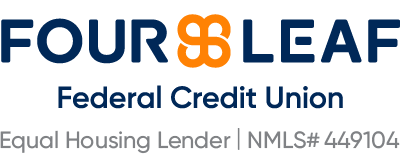Home Improvement Loan Calculator
See how much monthly payments on a home improvement loan will be based on the loan amount, rate and term.
Many, or all, of the products featured on this page are from our advertising partners who compensate us when you take certain actions on our website or click to take an action on their website. However, this does not influence our evaluations. Our opinions are our own. Here is a list of our partners and here's how we make money.
Once you have an estimated cost for your home improvement project, the next step is to decide how to pay for it.
If you’re considering a personal loan for home improvements, use this calculator to estimate the monthly payments and total interest, based on the loan term and interest rate you select.
Home improvement loan calculator
Loan details
2025
Jan
Feb
Mar
Apr
May
Jun
Jul
Aug
Sep
Oct
Nov
Dec
$0.00
HELOC & Home Equity Loans from our partners

on New American Funding
580
$750,000
on New American Funding

on FourLeaf Federal Credit Union
670
$1,000,000
on FourLeaf Federal Credit Union
Understanding your home improvement loan calculator results
Here's what the calculator shows you:
Monthly payment: What you can expect to pay each month. A longer term can lower your monthly payments but increase the total interest.
Total interest payments: The total amount of interest you’ll pay over the lifetime of the loan. Your interest rate is based primarily on factors like your credit, income and debt-to-income ratio. The loan’s amount, term and purpose can also affect your rate.
Total loan payments: The amount of money you'll have repaid at the end of the loan. This number depends on the amount you borrow and your interest rate.
How do home improvement loans work?
Personal loans offer fast funding for homeowners who want to get started quickly. Most lenders say they can fund a loan in less than a week; some can deposit the funds in your account the same day you apply.
Rates on unsecured loans tend to be higher than home equity loans and lines of credit, which require you to use your home as collateral. Borrowers with good or excellent credit (credit scores above 689) and a low debt-to-income ratio qualify for the lowest personal loan rates.
The shorter repayment periods on personal loans (two to 12 years) compared with home equity financing (often 10 or more years) means your monthly payments may be larger, but you’ll clear the debt sooner.
» MORE: How home improvement loans work
How to get a home improvement loan
Here are four steps to apply for an unsecured home improvement loan.
Get a firm cost estimate. Home improvement loans are distributed once in a lump sum, so you won’t be able to draw more or less than the amount you’re approved for. Having a solid idea of your project’s cost will help you know how much to apply for.
Pre-qualify. Many lenders let you pre-qualify to see potential loan rates, monthly payments and terms. Pre-qualifying requires a soft credit pull, which doesn’t affect your credit score and lets you compare loan offers from multiple lenders. The best loan option costs the least in total interest and has payments that fit your monthly budget.
Prepare documents. Once you've chosen a lender, gather the documents you need to apply. These can include W-2s, pay stubs and proof of address.
Apply. Many lenders let you apply for a personal loan online, but some banks or credit unions may require a branch visit. Lenders will run a hard credit check, which can temporarily drop your credit score a few points. Lenders typically notify you of a decision the same day and, if you’re approved, fund the loan within a week.
Home improvement loans with bad credit
Borrowers with bad credit scores (below 630) may qualify for home improvement loans with lenders that consider additional factors like work and educational history when assessing an application.
Rates are higher for bad-credit borrowers compared to borrowers with higher credit scores.
Other ways to finance a home improvement project
Factors like your equity, credit profile, income, savings and how quickly you need funds can affect how you pay for a remodel or repair. Explore all options to find the best way to pay for your project.
Home equity loans and lines of credit
With a home equity loan, you can typically borrow 80% of your home’s value, minus what you owe, and make payments for up to 30 years.
Like a personal loan, you get the funds in a lump sum and repay it in fixed monthly payments. A home equity loan may be the right option if you can lock in a low rate and want more time to pay off the loan.
A home equity line of credit, or HELOC, lets you tap into your home’s equity as needed. A HELOC may be an option if you’re unsure how much your home improvement project will cost, or if you plan to pay for it in stages.
You can typically get a line of credit worth up to 85% of your home’s value, minus what’s owed on mortgages. HELOCs have variable interest rates so even if you start with a low rate, it could rise over the long repayment period.
The application process for home equity financing can take up to six weeks and may require a home appraisal, plus paying closing costs.
Cash-out refinance
A cash-out refinance may be a good choice if you have equity in your home and if current mortgage rates are lower than what you’re paying. The new home loan is for a larger amount than the existing one, and you get the difference in cash.
Cash-out refinancing may be better for larger, long-term projects because of the closing costs and lengthy underwriting and appraisal processes it requires.
Credit cards
Credit cards’ high interest rates make them an expensive way to pay for a large renovation. But used strategically, a credit card can help you build credit, get rewards or finance the project interest-free.
Reward and store cards can get you cash back on some of your purchases and help you build credit at the same time. If you plan to go to the same hardware store for the majority of a DIY project, for example, you can use a store card to earn rewards. Pay the card off in full each month to avoid letting interest outweigh the perks.
A 0% intro APR credit card could be an interest-free way to pay for a small project. These cards require good or excellent credit to qualify. They waive interest for a period of about 15 to 21 months, so be sure you can pay off the card’s balance in full before the introductory offer expires.
Government assistance
Federal government programs can help homeowners finance improvements to their property. The Federal Housing Administration offers two programs: Title I loans and Energy Efficient Mortgages. These programs can make repairs and renovations affordable if you meet the criteria.
The Inflation Reduction Act of 2022, or IRA, allows homeowners to receive tax credits for energy-efficient improvements.
HELOC & Home Equity Loans from our partners

on New American Funding
580
$750,000
on New American Funding

on FourLeaf Federal Credit Union
670
$1,000,000
on FourLeaf Federal Credit Union


